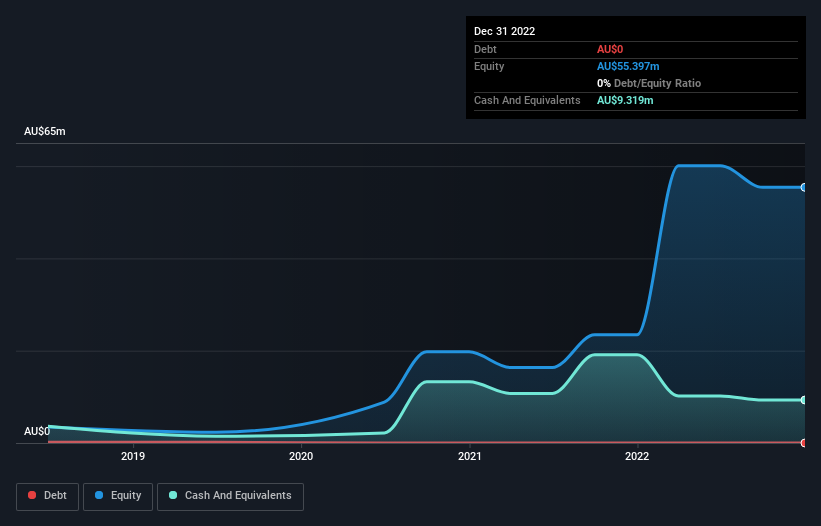We're Hopeful That Credit Clear (ASX:CCR) Will Use Its Cash Wisely
We can readily understand why investors are attracted to unprofitable companies. For example, biotech and mining exploration companies often lose money for years before finding success with a new treatment or mineral discovery. Nonetheless, only a fool would ignore the risk that a loss making company burns through its cash too quickly.
So should Credit Clear (ASX:CCR) shareholders be worried about its cash burn? In this report, we will consider the company's annual negative free cash flow, henceforth referring to it as the 'cash burn'. First, we'll determine its cash runway by comparing its cash burn with its cash reserves.
View our latest analysis for Credit Clear
How Long Is Credit Clear's Cash Runway?
A cash runway is defined as the length of time it would take a company to run out of money if it kept spending at its current rate of cash burn. As at December 2022, Credit Clear had cash of AU$9.3m and no debt. In the last year, its cash burn was AU$4.1m. So it had a cash runway of about 2.3 years from December 2022. That's decent, giving the company a couple years to develop its business. You can see how its cash balance has changed over time in the image below.

How Well Is Credit Clear Growing?
We reckon the fact that Credit Clear managed to shrink its cash burn by 23% over the last year is rather encouraging. But it was the operating revenue growth of 153% that really shone. It seems to be growing nicely. Of course, we've only taken a quick look at the stock's growth metrics, here. This graph of historic revenue growth shows how Credit Clear is building its business over time.
Can Credit Clear Raise More Cash Easily?
We are certainly impressed with the progress Credit Clear has made over the last year, but it is also worth considering how costly it would be if it wanted to raise more cash to fund faster growth. Companies can raise capital through either debt or equity. Commonly, a business will sell new shares in itself to raise cash and drive growth. We can compare a company's cash burn to its market capitalisation to get a sense for how many new shares a company would have to issue to fund one year's operations.
Credit Clear's cash burn of AU$4.1m is about 4.6% of its AU$89m market capitalisation. Given that is a rather small percentage, it would probably be really easy for the company to fund another year's growth by issuing some new shares to investors, or even by taking out a loan.
So, Should We Worry About Credit Clear's Cash Burn?
As you can probably tell by now, we're not too worried about Credit Clear's cash burn. In particular, we think its revenue growth stands out as evidence that the company is well on top of its spending. Its cash burn reduction wasn't quite as good, but was still rather encouraging! Looking at all the measures in this article, together, we're not worried about its rate of cash burn; the company seems well on top of its medium-term spending needs. Separately, we looked at different risks affecting the company and spotted 3 warning signs for Credit Clear (of which 1 is concerning!) you should know about.
Of course, you might find a fantastic investment by looking elsewhere. So take a peek at this free list of interesting companies, and this list of stocks growth stocks (according to analyst forecasts)
New: AI Stock Screener & Alerts
Our new AI Stock Screener scans the market every day to uncover opportunities.
• Dividend Powerhouses (3%+ Yield)
• Undervalued Small Caps with Insider Buying
• High growth Tech and AI Companies
Or build your own from over 50 metrics.
Have feedback on this article? Concerned about the content? Get in touch with us directly. Alternatively, email editorial-team (at) simplywallst.com.
This article by Simply Wall St is general in nature. We provide commentary based on historical data and analyst forecasts only using an unbiased methodology and our articles are not intended to be financial advice. It does not constitute a recommendation to buy or sell any stock, and does not take account of your objectives, or your financial situation. We aim to bring you long-term focused analysis driven by fundamental data. Note that our analysis may not factor in the latest price-sensitive company announcements or qualitative material. Simply Wall St has no position in any stocks mentioned.
About ASX:CCR
Credit Clear
Engages in the provision of debt resolution services and technology development and implementation of the digital engagement platform in Australia and New Zealand.
Flawless balance sheet and undervalued.
Similar Companies
Market Insights
Community Narratives



